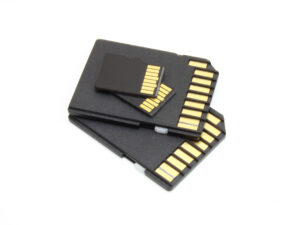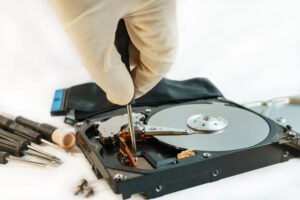Living in a world with digital devices and applications, we interact with digital data in one way or the other. We download various files and applications on our computers and smartphones every day. Similarly, we also delete unnecessary data. Many individuals face the issue of a choked memory on their devices. Computers with choked memories become quite limited in their use. Resultantly, many people have to look for ways to get the device’s memory freed.
Most computer operating systems (OS) provide various features for deleting stuff from a computer. There is an intermediate trash can or a recycle bin in most computers where your deleted data is placed when you delete a file from a given folder. This recycle bin is provided to minimize the common error of wrongly deleting a useful file. You can restore the deleted file from the Recycle Bin (Windows OS) or the Trash Can (Mac OS).
However, we want to discuss the intriguing case of permanently deleting data from a computer, i.e., further deleting the file from the recycle bin. This article will investigate whether you can recover permanently deleted files from your computer. Moreover, if it is possible to recover deleted files, how much-deleted data can you recover?
To understand how data deletion works in computers, we first have to understand how data is stored in the computer, i.e., memory management of a computer.
Table of Contents
Memory Management In a computer
Typically in computers, files are stored in a hierarchical arrangement of folders. At the very top of the hierarchy is the disk drive, which is the main storage media of the computer (SSD or HDD).
Most computers have two more partitions of the main storage device. These partitions are nothing more than chunks of the main storage media. Partitions are usually made when you install a new OS for your computer. However, there are disk managers in Windows and macOS, which let you change the settings of the partitions according to your needs.
It is in these partitions that users store their data. Some users store their files without worrying about arrangement and management. Others make detailed folders for different data types in a given partition. The way someone uses the main storage completely depends on the person using the computer.
The Backend Of Storing Data To A Computer
What happens in the hindsight of storing information on a drive is quite interesting. We present the application of file allocation table (FAT) systems to you. The computer’s OS builds a hierarchal tree (actually the FAT) to represent the position of various files in different folders. Whenever a new file is entered into a directory (synonymous to folder) or a subdirectory, the OS enters two kinds of data into the hierarchal tree. The first type of data is the data of the file itself stored logically on the primary storage. The second set of information points to the address of the file. The OS uses the second set of information to locate the file in a computer’s memory.
Note that we took the example of FAT for better understanding; there are other efficient file systems like the Microsft NT File System and the High-Performance File System (HPFS) available. However, all these file systems store the address data of all the files in the directory, just like the FAT. The segmentation and features are a major difference.
What Happens When you Delete a File Permanently
When you permanently delete a file from the recycle bin of a computer, the OS removes the data from the FAT of the system. In other words, the address of the file is erased from the system. By erasing the address, the memory area where the file was originally stored is considered obsolete by the OS. Hence, the OS considers that memory area as free memory and overwrites new data over the old data when needed.
Now, if you are thinking: as long as the OS does not overwrite data to the obsolete address, the ‘permanently deleted’ files are still there, then right you are. So, in simple words, we can recover a permanently deleted file from the computer, given that no new data is overwritten onto its address. Let’s see what solutions are present for recovering deleted data.
Solutions For Recovering Deleted Data
To recover data permanently deleted by yourself, you have to rely on using data recovery software. There are several software solutions available to recover your permanently deleted files and recover data from damaged storage media and Hard disk drives. The following software solutions are the most used when we want to recover permanently deleted data.
These software tools have excellent functionality and provide novel data recovery features. However, most of the software tools mentioned above are freemiums, where you might have to pay for greater data recovery features. Nonetheless, you get free basic data recovery functionality sufficient for smaller data loss.
Recuva stands out from other solutions because of its greater number of features in the free version. You can use Recuva to recover permanently deleted files in a few simple steps instantly. All you have to do is install their software and begin recovering data. You can watch this step-by-step video below, which shows how you can recover data using the free version of Recuva. For more help, you can watch the video below where Recuva is implemented to recover lost data.
How do I recover files which I deleted a while back?
Suppose you accidentally deleted important files, and it has been a while, like two to three days, since the deletion. In that case, the chances of recovery using a data recovery software are quite low. There is a high chance that the computer has overwritten data to the deleted data.
However, there is a chance of recovery if you have been making backups of your system. The retrieval of data from backups depends on the OS of your computer. In the macOS, we have the Time Machine utility, which automatically makes backups of your system. A similar feature in the Windows OS is available where you choose a backup drive and store a backup of your files over that drive. For more information about the Time Machine utility, you can read this post.
If you do not have a backup and find yourself in such a situation, unfortunately, your data has been lost. The best course of action from now would be to make a backup drive and store your data over there.
Get Data Recovered From JetData
The problem of unwanted deletion is faced by all individuals using computers. There may be chances of losing a lot of your data due to internal malfunction of storage devices like the hard disk. To secure the health of your computer while safeguarding your data, bring your device to JetData, where our seasoned professionals will look into the problems of your computer and devise the best solutions for it. Our data recovery services range from simple software-based recovery to the more complex and arduous manual data recovery from a hard disk drive. So, start your data recovery process with us and avoid the headache of ever losing your digital data.


